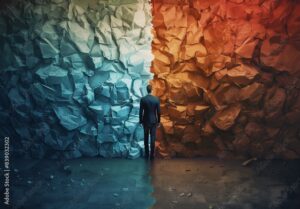Critical thinking has never been more critical

Living in a digital era provides students with access to endless amounts of information to support their learning. When choosing a topic for a report or paper, students are no longer limited by what information is held between the leatherbound covers of a specific letter of the Encyclopedia Britanica that was printed 5 years ago. Information and understandings are updated every day. Which on the surface sounds amazing, but who is controlling what is published? Where are the checks for accuracy? Is it even true?
Teaching students to think critically about the information they find online is essential for increasing their digital literacy and combating fake news. The first step to improving digital literacy is understanding how algorithms influence what we see. The internet, specifically social media, is designed to show us more of what we already consume and what supports our beliefs. But even this isn’t free of bias. Just like in The Wizard of Oz, there are people behind the curtain whose biases influence what appears in our search results.
In today’s social and political climates, it’s more important than ever that students understand that they cannot accept information or news stories at face value. Clickbait and opinions disguised as facts play a significant role in the circulation of fake news and misinformation. This is particularly true for facts that challenge strongly held beliefs and opinions.. This means that fact-checking will be an important aspect of the work they do online. This may seem like a daunting skill to teach kids in early elementary, however, the ELA curriculum provides educators with a jumping-off point.
In CR3.3, CR4.3, and CR5.2, students are asked to distinguish between verifiable fact and opinion and look for supporting evidence. I was inspired by The Oatmeal’s comic, “You’re not going to believe what I’m about to tell you”, and thought it would be an interesting exercise to have students research contrasting information about a single topic. For example, is breakfast the most important meal of the day? Students would be tasked with finding fact-based sources online that support and deny this claim. Students would then create a presentation to share with the class, and a discussion would follow where all students form an opinion based on the facts presented to them.
I think it’s important that students understand that because something is a “fact”, doesn’t mean there is only one correct answer. Not only is this dichotomous way of thinking detrimental to overall learning, but it can also be harmful when the digital age allows for information to change and facts to shift so quickly. What was a fact two weeks ago, may not be accurate at present. Being able to utilize their digital literacy skills will help students navigate this landscape now and in the future as adults.

I appreciate how powerful your post title is in creating a conversation on digital literacy and critical thinking.
You raise an excellent point regarding the abundance of information on the internet and the significance of educating pupils in digital literacy and critical thinking. You raise an excellent point regarding the abundance of information on the internet and the significance of educating pupils in digital literacy and critical thinking.
I completely agree! It is crucial for students to understand how to navigate all the information at their fingertips!